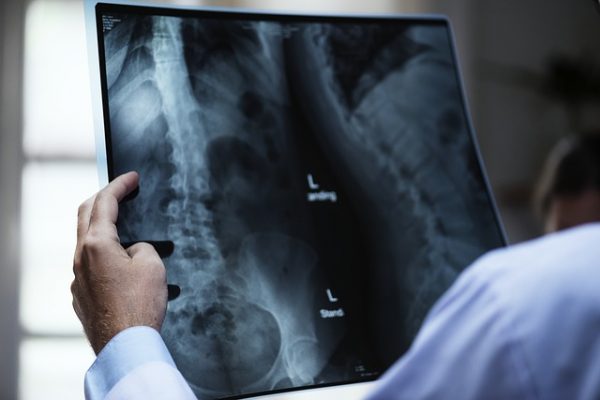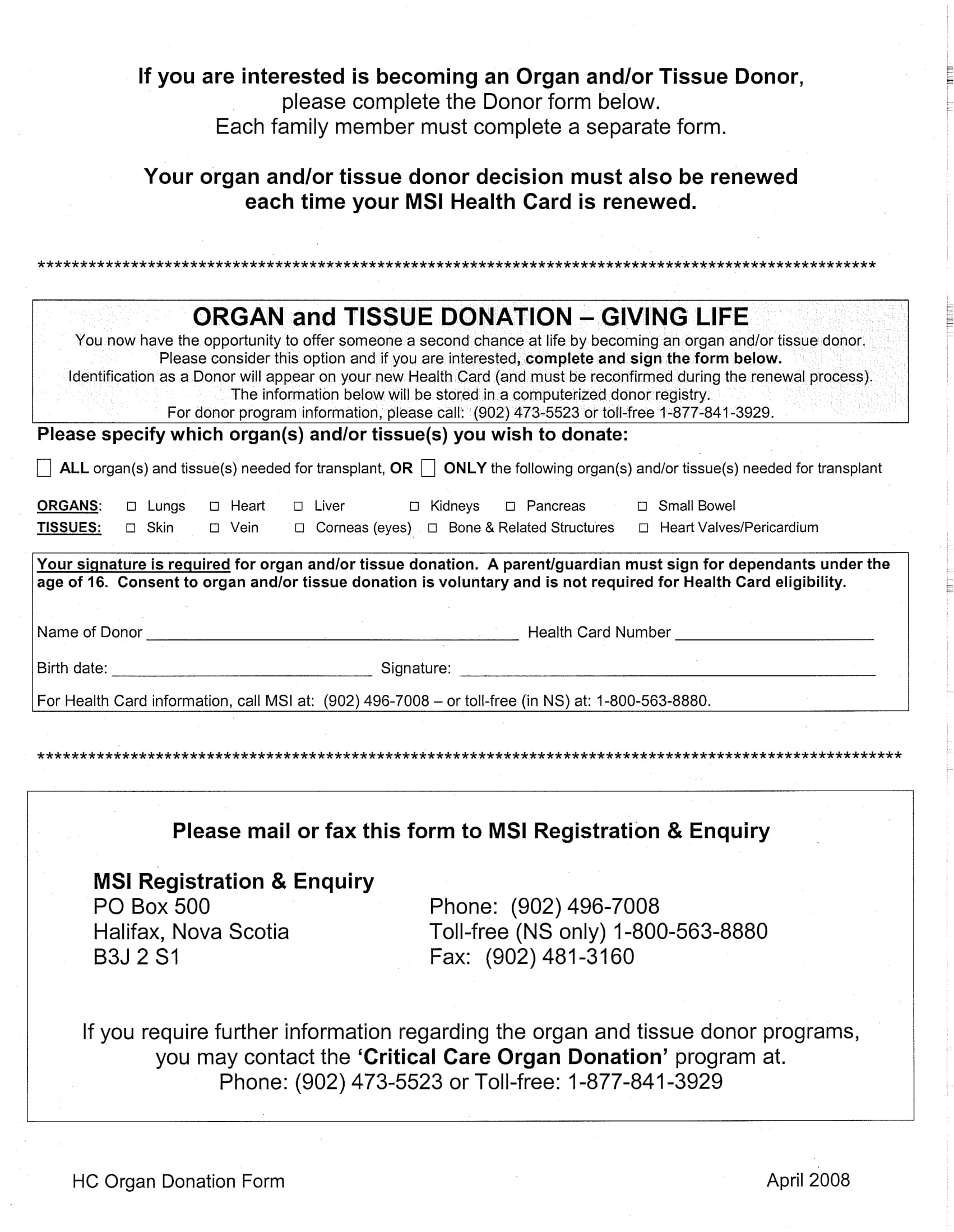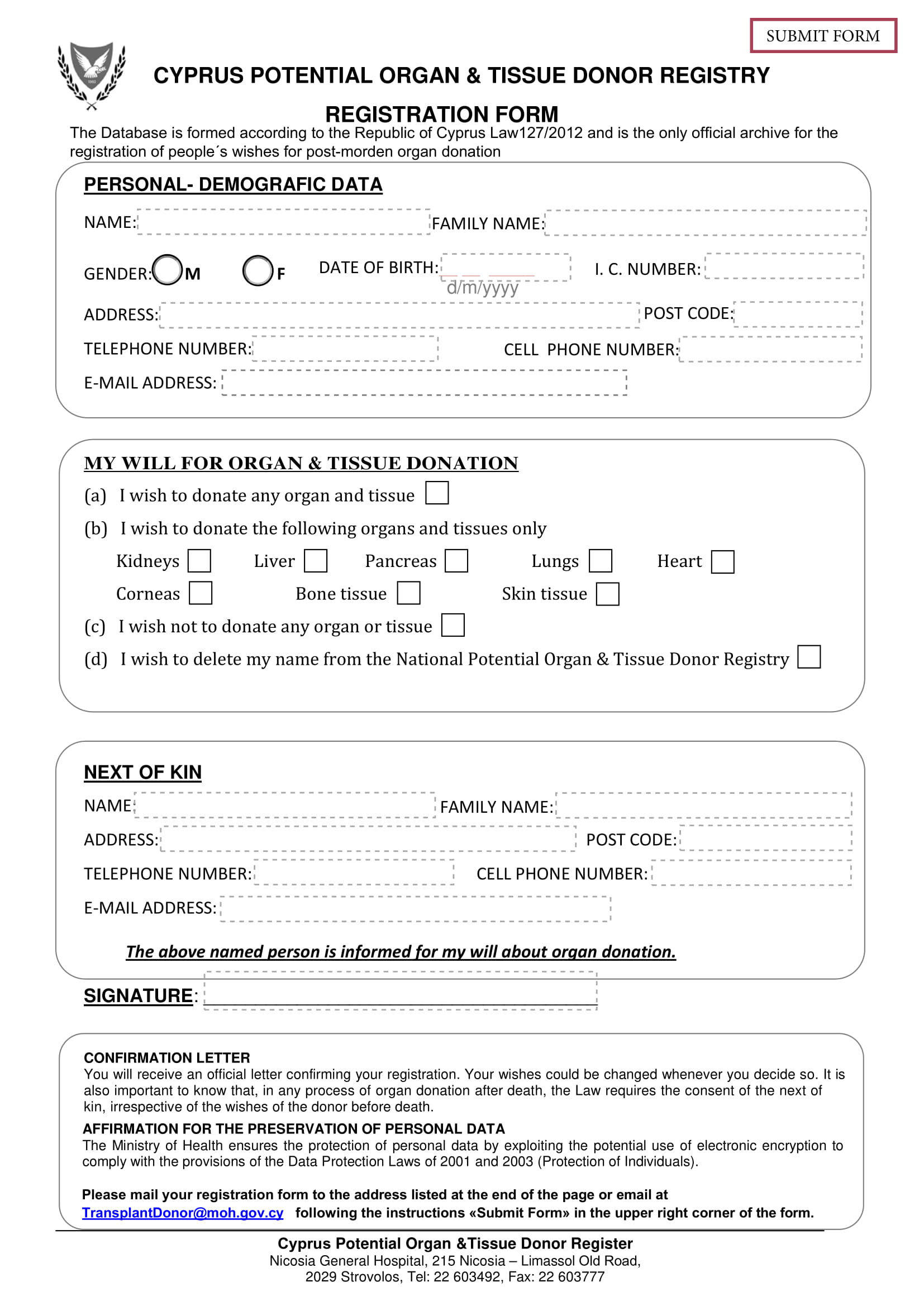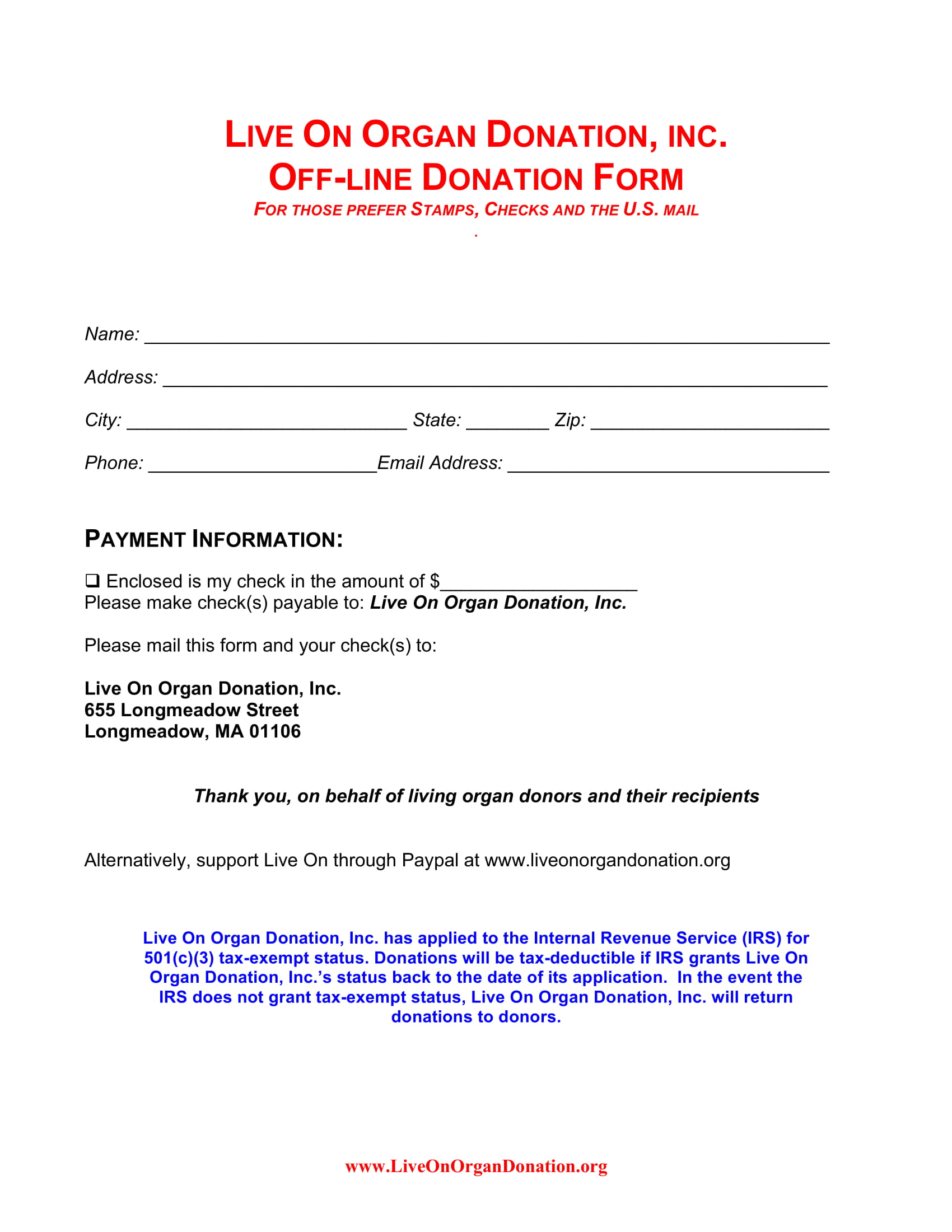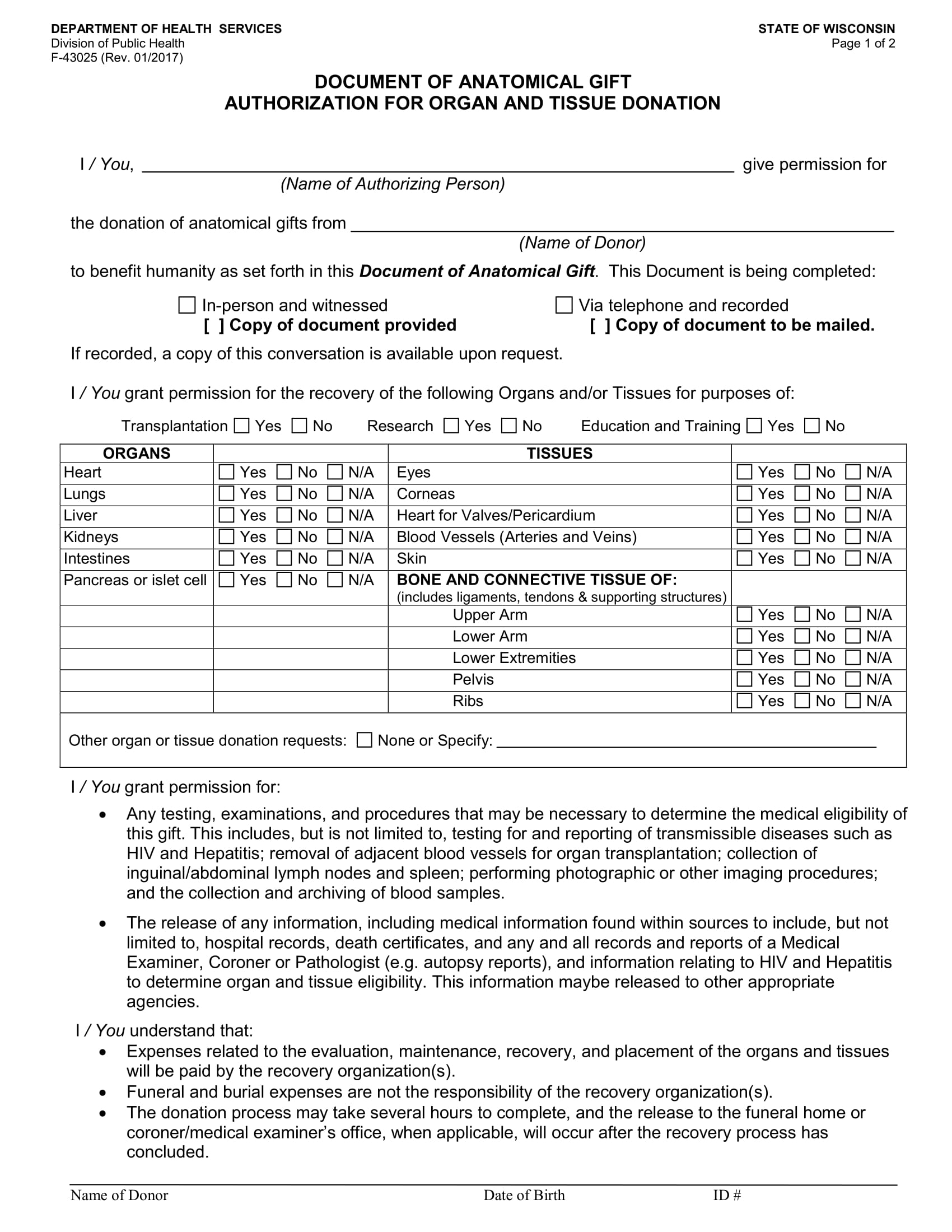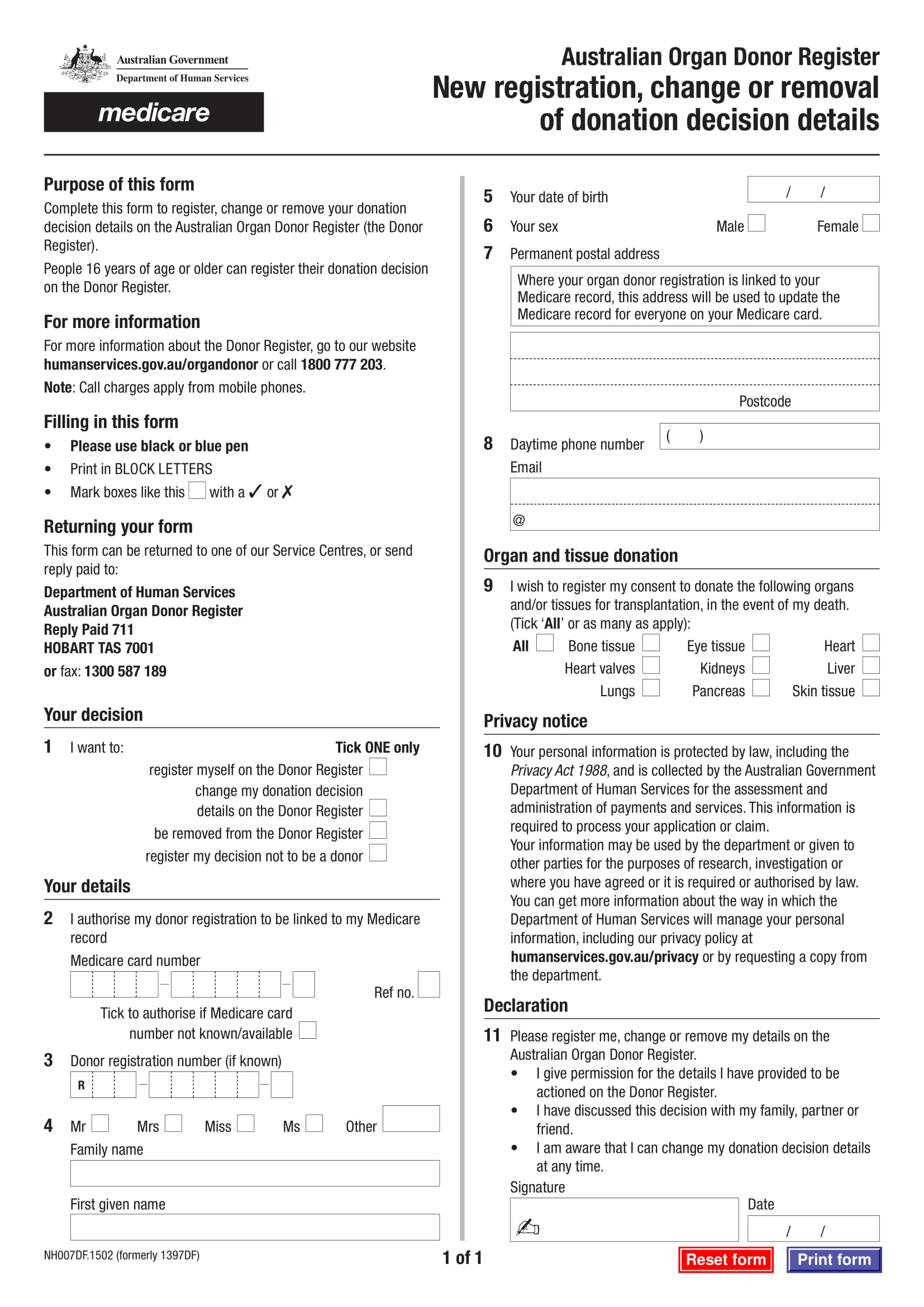Death is commonly associated with the grieving of the family members of the deceased; however, there are some deaths that mean life to medically ill patients. This is due to the promise and the assurance of the deceased that his body and his organs will be donated to those who are in need after he passes away. In order to be a legal organ donor, the deceased must have completed an organ donation form during his lifetime along with his last will and testament proving that he prefers to donate specific parts of his body. The form will be processed by the medical institute who handled the deceased as their patient prior to his death.
Organ and Tissue Donation Form
Nonetheless, there are also individuals who choose to donate their own organs even when they are still alive. This is when a living organ donation form is necessary to document the intention of the living donor and inform him about the organ transplant process.
Automated Organ Donation Form
What Is an Organ Donation Form?
An organ donation form is the type of document that an individual uses and completes if he prefers to donate his body or organs after his death or when he is still alive. Just like any other donation forms, this document must have the personal information of the organ donor and the details of what areas of his body will be donated to whom. Since there are numerous tissues and organs in a single human body, anyone is a suitable donor regardless of the medical condition and medications that were taken. Additionally, the significance of using the form is to provide clarity and security that the donating process will be conducted with the full permission of the donor and his relatives.
Offline Organ Donation Form
Types of Organ Donation Forms
There are only a few types of organ donation forms and these documents vary on when it will be used and what are its main objectives. Below are some of the known varieties of organ donation forms:
- Automated Organ Donation Form – One of the numerous benefits that the evolving technology has provided to the population is the ability of people to create easy and automated documents. Unlike the old times, an automated document allows an organization to immediately collect the general information of their users once the submit button is clicked. With this, medical institutes use automated forms to properly document their clients, patients, as well as medical donors. An automated donation form is prepared by the institute to collect sufficient data about their donors along with their donor’s donation preferences. The form contains the personal demographic data of the donor, his will for his choice of an organ to donate, the details of his next of kin or close relative, and the signature of the donor certifying that the statements on the form are legit and that the donation has been authorized.
- Offline Organ Donation Form – This is a type of organ donation form that can be used offline and can be printed in order to submit the document to the medical institute. This form is only applicable for donors who will sponsor monetary donations for organizations who help cure people needing transplants and surgeries. It must have the name, contact information, and residential address of the donor to complete the first section which is the donor’s information section. The donor’s payment information is the second section of this form which contains the amount that is enclosed by the donor. After completing the document, the donor must send out the form to the stated address of the organization to begin processing the check and recording the enclosed cash.
- Organ Donation Authorization Form – When an organ donor dies, it is the responsibility of the relative or the next of kin to complete an organ donation authorization form. The purpose of using the authorization form is to appropriately clarify matters relating to the process of collecting the deceased’s organs and acquire a granted consent from the deceased’s relatives. The form must indicate the name of the donor and the next of kin, a list of organs preferred and allowed to be donated, the medical procedure or benefit wherein the organs will be used, and the signatures of both the next of kin and the authorized medical personnel.
- Organ Donor Register Form – This form is presented to individuals at the medical center where they will enlist their names as organ donors. The registration form aids physicians and the medical staff to determine the donation decision of the donor, whether he prefers to update his registration information or be removed from the donation list and registration. There are five main sections found on the form. The first indicates the decision of the donor in a checklist box to be followed by the donor’s general details on the second section. The third section will state the specific organs to be donated such as eyes, tissues, and the donor’s liver. A privacy notice statement is the content of the fourth section, while on the last section is the donor’s declaration statement.
Organ Donation Authorization Form
How to Create a Simple Organ Donation Form
An organ donation form must have all the necessary information of the donor and the organs that he chooses to provide to medical patients. In order to create a functional and effective organ donation form, the steps below must be followed:
Step 1: Begin by adding a header. This includes incorporating the medical company logo and its name along with the title of the form, which can vary on whether it is a consent form or a registration form.
Step 2: Indicate a set of instructions. How the donor can complete the form and what procedures he must take to fulfill the donation process of the company must be stated in the instruction to assure that the donor is guided throughout the process.
Step 3: Place a set of checklist boxes for the choice of organs. The choices must range from eye, skin, heart, as well as bone donations.
Step 4: Add a table for the donor’s basic information. The donor must be able to state his full legal name, health card number, social security number, birth date, and signature. These details will be used for the company’s donor identification in the company’s database systems.
Step 5: State the address of the medical company. This is applicable for donation forms that are intended to be sent to the company to process the registration. On the other hand, for forms that are used online by donors, a submit button can be incorporated for promoting an easier way of sending the entries of the donor.
Organ Donor Register Form
Although organ donations are risky to donors, this act of helping patients who are dealing with severe illnesses must be promoted throughout the globe. With the right form to use, organizations will be able to acquire ample details about their donors, as well as spread the good news about the availability of organ donations in a country.
Related Posts Here
-
Report Form
-
FREE 49+ Budget Forms in PDF | MS Word | Excel
-
Profile Form
-
Menu Form
-
Event Planner Form
-
FREE 16+ Ticket Order Forms in PDF | MS Word | Excel
-
Employee Dress Code Policy Form
-
Rental History Form
-
Advertising Contract Form
-
Service Agreement Form
-
Income Statement Form
-
Accident Statement Form
-
Performance Review Form
-
Event Contract Form
-
Contest Registration Form
